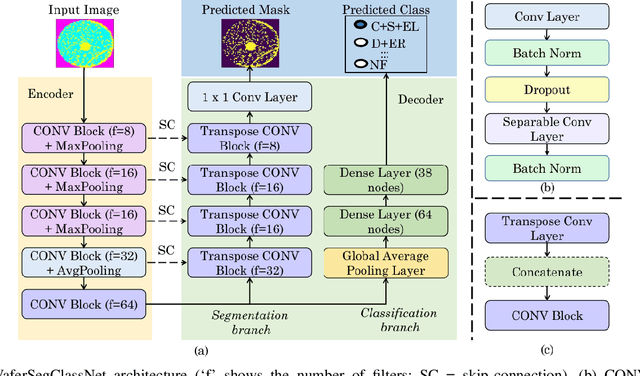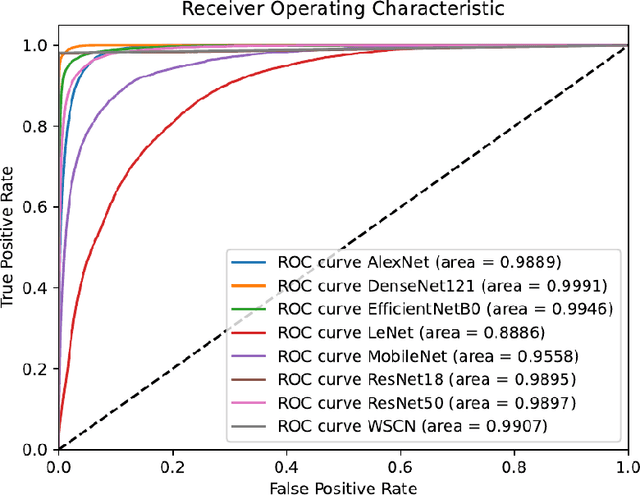WaferSegClassNet -- A Light-weight Network for Classification and Segmentation of Semiconductor Wafer Defects
Paper and Code
Jul 03, 2022



As the integration density and design intricacy of semiconductor wafers increase, the magnitude and complexity of defects in them are also on the rise. Since the manual inspection of wafer defects is costly, an automated artificial intelligence (AI) based computer-vision approach is highly desired. The previous works on defect analysis have several limitations, such as low accuracy and the need for separate models for classification and segmentation. For analyzing mixed-type defects, some previous works require separately training one model for each defect type, which is non-scalable. In this paper, we present WaferSegClassNet (WSCN), a novel network based on encoder-decoder architecture. WSCN performs simultaneous classification and segmentation of both single and mixed-type wafer defects. WSCN uses a "shared encoder" for classification, and segmentation, which allows training WSCN end-to-end. We use N-pair contrastive loss to first pretrain the encoder and then use BCE-Dice loss for segmentation, and categorical cross-entropy loss for classification. Use of N-pair contrastive loss helps in better embedding representation in the latent dimension of wafer maps. WSCN has a model size of only 0.51MB and performs only 0.2M FLOPS. Thus, it is much lighter than other state-of-the-art models. Also, it requires only 150 epochs for convergence, compared to 4,000 epochs needed by a previous work. We evaluate our model on the MixedWM38 dataset, which has 38,015 images. WSCN achieves an average classification accuracy of 98.2% and a dice coefficient of 0.9999. We are the first to show segmentation results on the MixedWM38 dataset. The source code can be obtained from https://github.com/ckmvigil/WaferSegClassNet.
 Add to Chrome
Add to Chrome Add to Firefox
Add to Firefox Add to Edge
Add to Edge